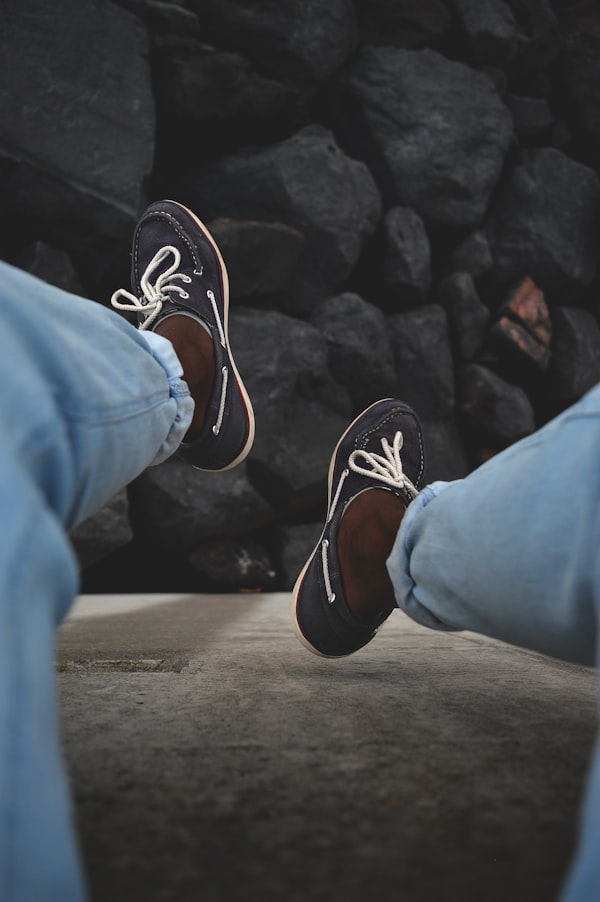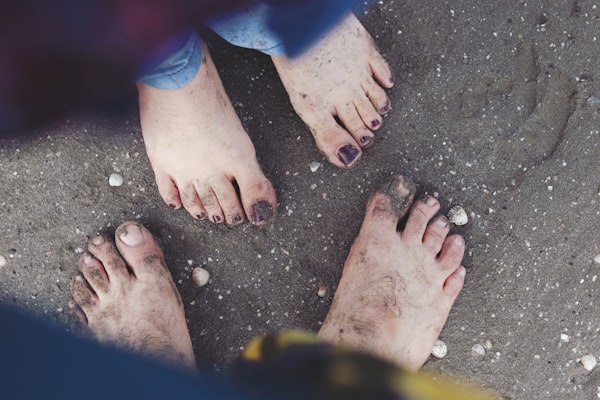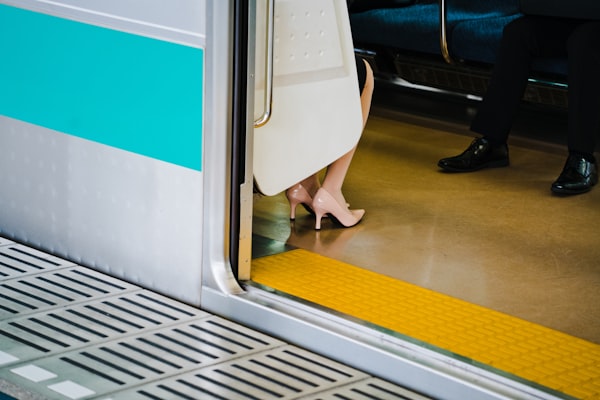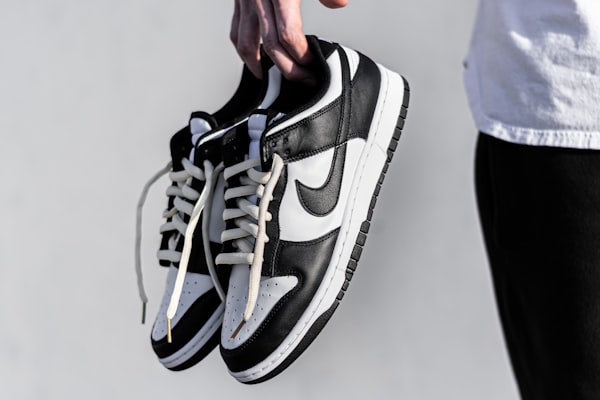Are your climbing shoes starting to look more worn out than a pair of socks after a hundred washes? Have you ever wondered how long you can keep using them before they become a safety hazard or just plain uncomfortable? Well, you've come to the right place, my fellow adventurer!
Climbing shoes are the unsung heroes of our vertical endeavors, helping us grip, edge, and smear our way up challenging routes. But just like any other gear, they too have an expiration date. So how long do climbing shoes last, and what factors affect their lifespan?
Today we delve into the nitty-gritty of climbing shoe durability, examining everything from the type of climbing you do to the care and maintenance of your shoes. We'll also share some tips and tricks to help you extend the life of your beloved kicks, so you can focus on your next climb instead of worrying about the state of your footwear.
Whether you're a seasoned climber or a newbie to the sport, read on to discover whether it's time to retire your shoes or give them a new lease on life. So let's lace up and get started!
Factors Affecting Climbing Shoe Durability
The lifespan of climbing shoes can vary greatly depending on several factors, from the type of climbing you do to how well you take care of your shoes. In this section, we'll explore the key factors that can impact the durability of your climbing shoes.
1. Types of Climbing and Frequency of Use
When it comes to climbing shoe durability, the types of climbing you do and how often you climb can have a significant impact. Here are some factors to consider:
Types of Climbing: Different types of climbing can affect your shoes in different ways. For example, bouldering and gym climbing tend to put more wear and tear on the rubber due to the nature of the climbing moves. On the other hand, sport climbing and trad climbing may require more edging and smearing, which can wear out the shoe's sole faster. Crack climbing can also be particularly tough on shoes, as the rough rock surface can cause more abrasion and tearing.
Frequency of Use: The more often you climb, the faster your shoes will wear out. This is especially true if you climb multiple times a week or have long sessions that stress your shoes. If you're a serious climber, you may need to replace your shoes every few months to keep them in good condition. On the other hand, if you only climb occasionally or for short periods, your shoes may last longer.
Climbing Environments: Certain climbing environments can be harsher on shoes than others. For example, climbing in dusty areas or on rough, abrasive rock can cause more wear and tear on your shoes' rubber and the upper. Wet or humid conditions can also cause shoes to deteriorate faster, as the moisture can weaken the glue that holds the sole to the upper.
In general, the more you push your shoes to their limits, the faster they will wear out.
2. Shoe Construction and Materials
The construction and materials of your climbing shoes can also play a significant role in their durability. Here are some factors to consider:
Shoe Construction: There are several types of shoe construction used in climbing shoes, including board-lasted, slip-lasted, and combination-lasted. Board-lasted shoes are more durable and offer more support. Still, they can also be heavier and less sensitive than slip-lasted shoes. On the other hand, slip-lasted shoes are generally lighter and more sensitive but may wear out faster. Combination-lasted shoes offer a balance between the two, with a board-lasted rear and a slip-lasted front.
Materials: The most common materials used in climbing shoes are rubber, leather, and synthetics. Rubber is used for the shoe's sole and can come in different grades and thicknesses. Leather is a popular choice for the shoe's upper, as it molds to the foot and is durable. Synthetic materials like mesh and microfiber can be lighter and more breathable than leather but may not last as long.
Design and Features: The design and features of climbing shoes can also impact their durability and performance. For example, a lacing system that allows for a snug fit can help prevent slippage and reduce wear and tear. A toe box shape that allows for more toe curl can provide better edging performance but may put more stress on the shoe. A well-constructed rand (the rubber that wraps around the toe and sides of the shoe) can help protect the upper and extend the shoe's life.
By understanding the differences in shoe construction and materials and the impact of design and features, you can make more informed decisions about the climbing shoes you choose and how you use them.
3. Care and Maintenance
Proper care and maintenance can go a long way in extending the life of your climbing shoes. Here are some things to consider:
Shoe Storage and Drying: Storing your shoes properly can help prevent damage and odors. Avoid leaving them in a hot car or direct sunlight, which can cause the rubber to break down. Instead, store them in a cool, dry place, ideally with some air circulation. Remove the insoles and stuff the shoes with newspaper or a shoe tree to dry them after a climb to help them maintain their shape. Avoid using a dryer or direct heat, which can damage the materials and glue.

Regular Cleaning and Maintenance: Regular cleaning can help prevent dirt and sweat from building up, causing odors and bacteria growth. Use a soft brush or sponge to remove dirt and debris from the rubber and upper, and use a mild soap or specialized shoe cleaner if necessary. Allow them to dry completely before storing them. It's also a good idea to periodically check for any signs of wear and tear, such as holes in the rubber or loose stitching, and address them promptly.

Resoling and Repair Options: If your shoes show signs of wear on the sole or upper, don't despair! Many climbing shoe manufacturers offer resoling services, which can extend the life of your shoes and save you money in the long run. Some companies even offer repair services for minor tears or holes. Keep in mind that the cost of resoling or repairing may vary depending on the brand and extent of the damage, so be sure to weigh the cost against the value of your shoes.
By taking good care of your climbing shoes and addressing any issues promptly, you can get more use out of them and save money in the long run.
By understanding the factors that affect climbing shoe durability, you can make more informed decisions about how to care for your shoes and when it's time to retire them. Whether you're a weekend warrior or a pro climber, caring for your gear ensures a safe and enjoyable climbing experience.
Signs that It's Time to Retire Your Climbing Shoes
Even with proper care and maintenance, climbing shoes eventually reach the end of their lifespan. This section will explore the signs that it's time to retire your climbing shoes and invest in a new pair.
1. Wear and Tear on The Sole and Upper
Wear and tear on the sole and upper of climbing shoes can significantly impact their performance and safety.
As the sole of your climbing shoes wears down, the amount of friction they provide decreases. This can impact your ability to grip holds and increase the risk of slipping. Worn-out soles can also make it more challenging to maintain your balance and put additional stress on other parts of your foot, such as your toes and ankles. Additionally, shoes with significant wear on the sole can be more prone to blowing out or delaminating, which can be dangerous.
The upper of climbing shoes holds your foot securely in place and provides support and comfort. As the upper wears out, it can impact the shoe's fit and comfort, potentially causing blisters, hot spots, or other foot injuries. In extreme cases, worn-out uppers can also cause your foot to slip out of the shoe while climbing, which can be extremely dangerous.
Common signs of wear and tear on climbing shoes include holes or thinning rubber on the sole, peeling or delaminating of the rubber from the sole, and stretched or torn leather on the upper. You may also notice that the shoes are no longer as tight or secure as they once were or that the cushioning has compressed, providing less support and comfort.
2. Smells and Bacterial Growth
Climbing shoes are notorious for developing unpleasant smells and bacterial growth.
Climbing shoes are designed to fit snugly and conform to your foot's shape, creating a warm and moist environment that's perfect for bacteria and fungi to grow. This can lead to unpleasant odors and even infections, such as athlete's foot.
In addition to being unpleasant, smells and bacterial growth can also impact the performance of your climbing shoes. A buildup of sweat and bacteria can cause the shoe's materials to break down more quickly, leading to a shorter lifespan. It can also make it more challenging to grip holds and increase the risk of slipping.
To prevent smells and bacterial growth, it's essential to allow your shoes to dry completely between climbs. You can also use odor-absorbing products, such as activated charcoal inserts, to help reduce odors. Regularly washing your shoes can also help remove sweat and bacteria buildup, but be sure to follow the manufacturer's instructions for care and avoid using harsh detergents or hot water.
If your shoes already have an unpleasant odor or signs of bacterial growth, there are several treatments you can try, such as using a mixture of water and vinegar or an antifungal spray. However, in some cases, it may be best to retire the shoes and invest in a new pair.

3. Lack of Fit and Support
Proper fit and support are essential for climbing shoes to perform effectively and safely.
Climbing shoes should fit snugly without pain, with the toes curled slightly and the heel secured. The shoe should provide support and comfort throughout the foot without any pressure points or hot spots. The shoe's design and features, such as the lacing system and toe box shape, can also impact the fit and feel.
Over time, climbing shoes may start to stretch or break down, impacting their fit and support. If the shoes are too loose, your foot may slip inside the shoe, causing you to lose grip or stability. If the shoes are too tight, they can cause discomfort or even injury. Changes in the shoe's cushioning or support can also impact performance and safety.
Common signs that your climbing shoes may no longer fit or support your feet properly include heel slippage, stretched-out leather, compressed cushioning, and visible wear on the shoe's interior. You may also notice that your toes can no longer curl as much as they once did or that the shoes feel less secure or stable than they used to.
There are several signs that it's time to retire your climbing shoes, including wear and tear on the sole and upper, smells and bacterial growth, and lack of fit and support. By recognizing these signs and retiring your shoes when necessary, you can prevent injury, ensure your gear is safe and effective, and maximize your investment.
Tips for Extending the Life of Your Climbing Shoes
To get the most out of your climbing shoes and avoid frequent replacements, taking good care of them is essential. In this section, we'll share tips for extending the life of your climbing shoes and keeping them in good condition for longer.
1. Proper Storage and Drying
Proper storage and drying are essential for maintaining the quality and longevity of your climbing shoes.
Storing your climbing shoes in a cool, dry place with air circulation can help prevent damage and odors. Avoid storing shoes in direct sunlight, which can cause the materials to break down more quickly. In addition, keeping your shoes dry between uses can help prevent bacterial growth and unpleasant smells.
When storing your climbing shoes, it's important to avoid crushing or bending them, as this can damage the materials and affect the shoe's fit. One option is to store them in their original box or a specialized shoe bag, which can help protect them from dust and other contaminants. Another option is to store them on a shoe rack with adequate space between shoes to promote air circulation.
After climbing, it's essential to allow your shoes to dry completely before storing them. One way is to stuff them with newspaper or a shoe tree, which can help absorb moisture and maintain their shape. Alternatively, you can place them in a well-ventilated area near a fan or air conditioning unit.
2. Regular Cleaning and Maintenance
Regular cleaning and maintenance are crucial for preventing wear and tear and extending the life of your climbing shoes.
Climbing shoes are subjected to a lot of abuse, including exposure to sweat, dirt, and other contaminants. Over time, these can cause the materials to break down and impact the shoe's performance and safety. Regular cleaning and maintenance can help prevent this damage and extend the life of your shoes.
When cleaning your climbing shoes, it's essential to use gentle methods and avoid harsh chemicals that can damage the materials. A soft brush or sponge and a mild soap or specialized cleaner can remove dirt and stains. Be sure to follow the manufacturer's instructions for care and avoid submerging the shoes in water, as this can cause the glue to weaken.
It's essential to check your climbing shoes regularly for signs of wear and tear, such as holes or thinning rubber, stretched-out leather, or delamination. You can address these issues promptly and potentially prevent more significant damage by catching them early. Additionally, regularly checking your shoes can help you identify areas that need more frequent cleaning or maintenance.

3. Resoling and Repair Options
Resoling and repairing climbing shoes can be a cost-effective way to extend their life and save money in the long run.
Climbing shoes can wear out over time, with the sole and other components breaking down. Rather than replacing the entire shoe, resoling or repairing it can be a more affordable option. Resoling involves replacing the rubber on the sole, while repair may involve fixing tears or other damage to the upper or other components.
The cost and process of resoling or repairing climbing shoes can vary depending on the type of shoe and the extent of the damage. In general, resoling can cost anywhere from $25 to $70, while repairs may cost $10 to $40. The process typically involves sending the shoes to a specialized resoler or repair service, who will assess the damage and provide a quote for the work.
When selecting a resoler or repair service, it's essential to do your research. Choose a reputable provider with experience working with climbing shoes. Look for reviews and testimonials from other climbers and ask for recommendations from fellow climbers or climbing gear shops. Additionally, ask about the resoler's or repair service's warranty or guarantee on their work.
By following these tips for proper storage and drying, regular cleaning and maintenance, and utilizing resoling and repair options when necessary, you can extend the life of your climbing shoes and get the most use out of your investment.
When to Retire Your Climbing Shoes and How to Dispose of Them
When your climbing shoes have reached the end of their life, it's essential to dispose of them safely and responsibly. This section will discuss tips for recycling, donating, or repurposing old climbing shoes to reduce waste and promote sustainability.
1. Safe and Environmentally-Friendly Disposal Options
When your climbing shoes have reached the end of their life, it's essential to dispose of them safely and responsibly to minimize their environmental impact.
Discarding climbing shoes improperly can lead to environmental pollution and contribute to waste. Climbing shoes are often made with materials that do not biodegrade, such as synthetic rubber, making them difficult to dispose of. By considering safe and environmentally-friendly disposal options, you can help reduce the impact of your climbing shoes on the planet.
One option for disposing of old climbing shoes is to recycle or donate them. Many organizations, such as the Access Fund or local gear shops, accept used gear and may have programs for recycling or donating climbing shoes. Before donating or recycling, it's essential to thoroughly clean the shoes and remove any personal information or identifying marks.
Another option for disposing of old climbing shoes in an environmentally-friendly way is to participate in shoe recycling programs. These programs work to repurpose or recycle the materials in the shoes, diverting them from landfills. Additionally, you can dispose of climbing shoes through proper waste disposal methods, such as taking them to a specialized facility that handles non-biodegradable materials.
2. Creative Ways to Repurpose Old Climbing Shoes
There are many creative ways to repurpose old climbing shoes, such as using them as planters for succulents or other small plants, creating unique art installations or sculptures, or turning them into keychains or other accessories. The possibilities are endless, and repurposing old climbing shoes can be a fun and fulfilling way to get creative with your gear.
In addition to reducing waste and minimizing your environmental impact, repurposing old climbing shoes can promote creativity and provide a unique and personal touch to your space or style. It can be a way to celebrate your love for climbing and give your gear a new life beyond its original purpose.
There are many successful examples of repurposing old climbing shoes, from art installations and sculptures to innovative planters and accessories. You can draw inspiration from these projects and experiment with your ideas to see what works best for you.
Getting started with your repurposing project is easy - you only need a little creativity and some basic supplies. Consider using paints, glues, or other materials to customize and decorate your shoes to fit your desired purpose.
By considering safe and environmentally-friendly disposal options and creative ways to repurpose old climbing shoes, you can give your gear a new life and reduce waste in the process.
On a Final Note
Your trusty climbing shoes may not last forever, but with a little TLC, you can squeeze out every last bit of friction from them.
Whether you retire or resole them, remember that every hole, scuff, and stain tells a story of your climbing journey.
So keep climbing, and let your shoes guide you to new heights (while keeping you from falling off them)!
Related Articles











